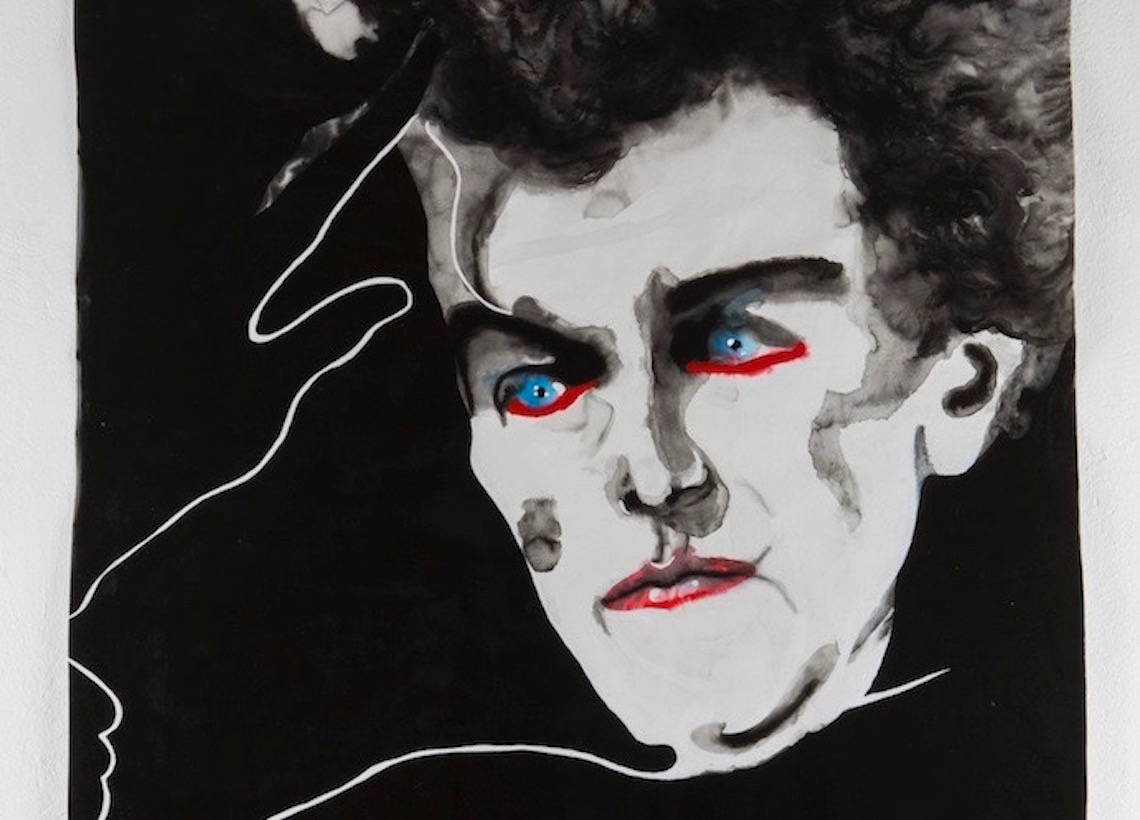
Born in 1975 in Lisbon, Adriana Molder has developed a unique body of work consisting of black and white portraits using India ink on tracing paper. Inspired by iconic figures mostly taken from films, Adriana Molder continues to incorporate in her work various references from literature to existing histories, old masters paintings and random images found in magazines. Cinematographic repertoire always plays an important role in her work as the depicted characters seem to unfold a narrative and express themselves beyond their static portrayal position.
You work essentially on human portraits. Do you think you are renewing the artistic field of portrait?
No. I believe that I’m continuing the tradition of portrait and the tradition of drawing and painting.

You work from existing images taken from films, literature or other sources. Do you also work ex nihilo?
All the work I do is a work of creation, even if I work with existing images to inspire me. These images are inspirational models and the result is never limited to the model but limited to what I can bring to the painting. Sometimes I work without an existing model, but then that is not true because things that visit our mind are always the result of having seen something before.
What attracts you in re visiting images that are already present in people’s minds? Is it a way to pay tribute to your inspiration sources?
I’ve been using a lot of different references in my work and I’ve also worked from figures coming from pop culture that are easily recognizable. I would say that there is sometimes a wish of translation, a desire not to “own” but to translate an existing image into my own language and to express it through my “voice”.

For a long time you have been using Indian ink on tracing paper developing a very unique technique making the black-filled paper look like a second skin. Can you tell us more about this technique and how you came to it?
I’ve started to draw with Indian ink on tracing paper around 1996 and it happened a bit by chance. I guess it was the material I had around the house one day and it stayed for some years as my main technique. The tracing paper is not prepared for water so it folds and wrinkles with the water and the many layers of Indian ink creating many different ‘accidents’ and also a very deep shiny black surface that I’m very fond of.
The introduction of colour and the move to canvas and very thick watercolour papers is another step in your aesthetic evolution. Why is the role of the material in your work and how do you explain this evolution?
I wanted to work on canvas for a long time but I wanted to keep my watery way of painting and keep also the accidents that are so important in my drawings by the use of water and many layers of paint but also by working on the floor. I’ve managed to keep all that by using acrylic on canvas. The thick watercolor paper is something that makes a very strong contrast to the tracing paper I’ve been using. It’s like a very thick and unbreakable skin. Working on smaller scale papers comes as a challenge for my hand that always prefers to work big. I think I’ve just found new materials and technique to continue my work.

The Light in the Heart series related to Virginia Wolf’s short story encompassing lost love. Can you explain what this series is about?
Some of the paintings are portraits of people who feel sad that they are not alive anymore. This idea came to me a lot when I was constructing the series. In fact the series is about nothing, I mean there is not a narrative. But all the portraits bring you close to different characters with a strong background story. I think you don’t need to know the story, you will discovery it by yourself when looking at the works.
The introduction of neon colours such as in Neon Lady contrasts with the black and white tones that you have been using so far. Do colours suggest emotions?
Colors suggest intensity. Black brings out this intensity in colors and also in white.
The Mystery series exclusively featured portraits of women. These characters are either watching something or being watched. Is the viewer the missing element? Are you engaging a dialogue between your characters and the viewer?
There is no work without the viewer. My portraits need the attention of the viewer to be. And it’s not different in the Mystery series. Maybe they are also watching the viewer. Some people tell me that they felt watched by my paintings, I was happy with this idea.
Talking about your career, in 2006, you were granted a place in the International Studio Program at the Künstlerhaus Bethanien in Berlin. From then, you decided to stay in Berlin. What does Berlin bring you and what is it to be part of this boiling artistic community?
I was already in Berlin when I got to be a Bethanien resident. After that it was very natural that I wanted to stay. Berlin brings me a lot of freedom, freedom to be a woman and to be an artist and to live like I really want. It’s a very exciting community. The people I meet and deal on daily basis, so many great artists but not only, writers, filmmakers, dancers. For sometime I was sceptic about a city so full of artists but now I just want to enjoy it while it lasts.
On a more personal note, what are your next projects?
I’m working on a very special project involving an 18th century book that was very important for other later writers and I hope to be extremely inspiring to me.




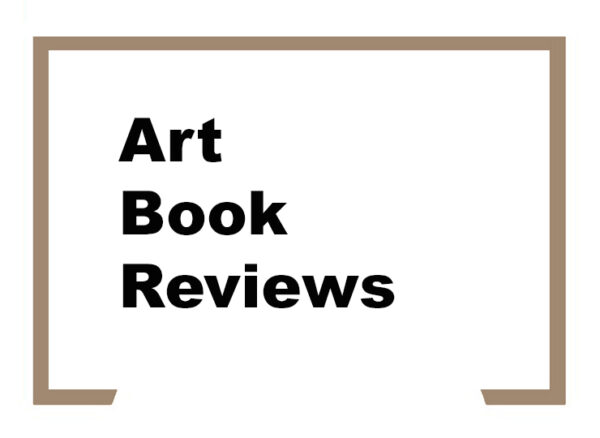
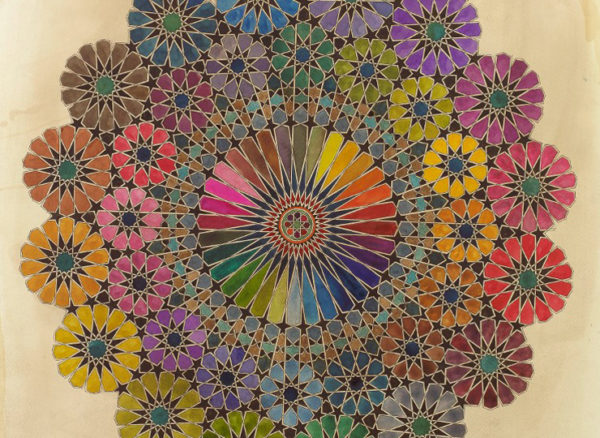
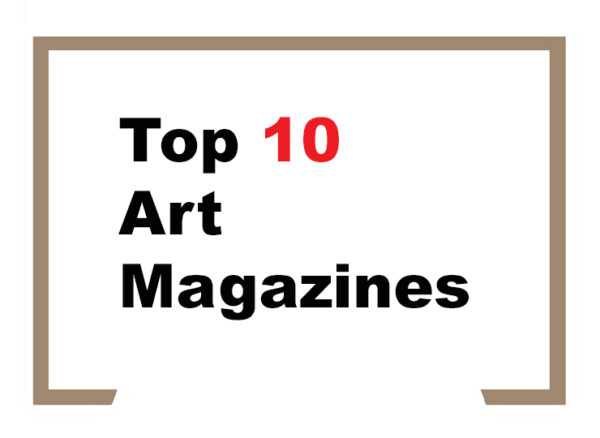
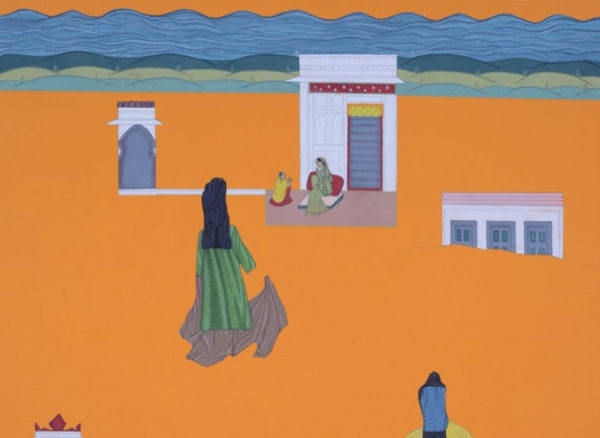
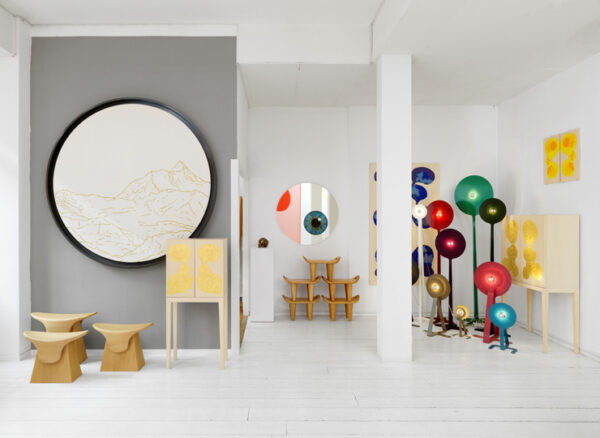

Comments